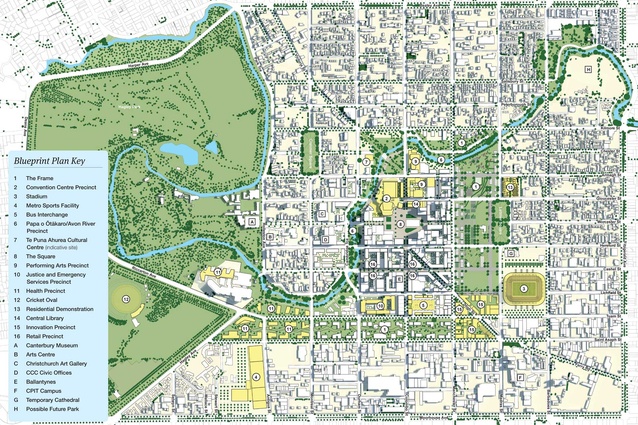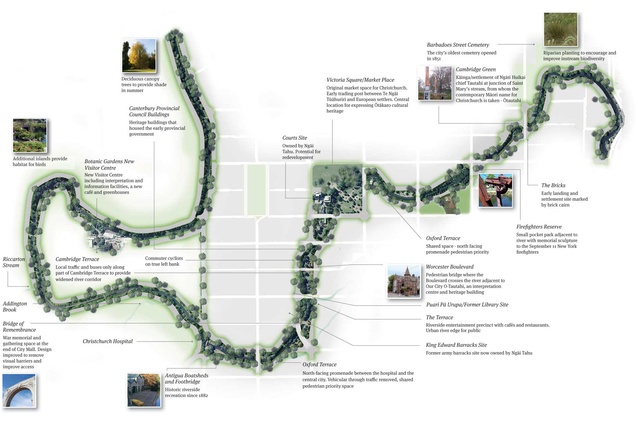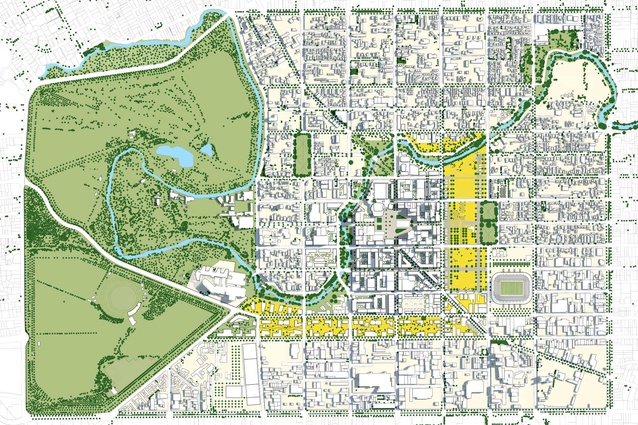The final blueprint for a new Christchurch
The Christchurch Central Recovery Plan has been released. The final blueprint for “a smaller, greener central city” aims to “set Christchurch apart from any other urban centre,” according to Canterbury Earthquake Recovery Minister Gerry Brownlee.
608 hectares of Christchurch city, including Hagley Park, will be divided into precincts for health, arts and entertainment, retail, and the justice and emergency sectors. New facilities will be built to replace those lost during the 2010 and 2011 earthquakes, resulting in an eventual loss of over 70% of Christchurch’s central city buildings. Highlights include facilities for high performance sports, health and innovation, and a new convention centre.
Created by CERA’s Christchurch Central Development Unit (CCDU), following a draft Recovery Plan produced by the Christchurch City Council in December 2011, the final Christchurch Central Recovery Plan has been developed following a review process that looked at over 106,000 ideas offered through Christchurch City Council’s public consultation process. The conclusion was that people said they wanted “a greener central city with buildings that contributed more strongly to the city’s identity. They wanted a more compact centre that supported a wider range of activities and was easier to get around.”
The city’s new form will develop within a large L-shaped green space, with a low-density open space eastern frame running from Kilmore Street to Saint Asaph Street, encapsulating an entire block-width of land between Madras and Manchester Streets. It is expected that new urban living apartments will be developed along the edge of this space. Brownlee said, “This innovation is the most significant change from the draft Recovery Plan, and is likely to enhance the economic value of the area and promote denser central city development.” He describes the plan as a “light, airy, college-campus style feel for the home of numerous innovative Christchurch companies and public sector agencies.”
To read the Christchurch Central Recovery Plan documents and to find out more, click here.
To view a short film about the Christchurch Central Recovery Plan, watch the video below:













